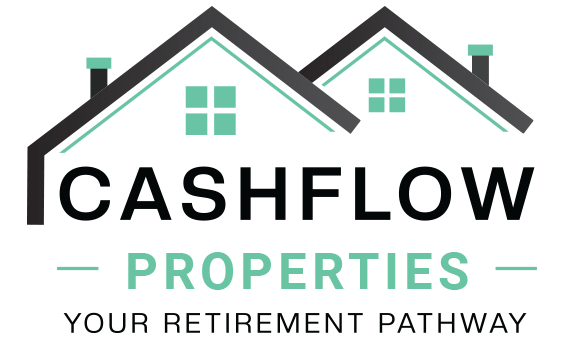
Scaling a residential property portfolio in Australia feels, for many investors, like trying to sprint up a sand dune: every step forward meets resistance. After years watching markets, crunching numbers and following investors who’ve both succeeded and stalled, two obstacles stand out as the most common and most pernicious: Not having enough deposit capital, and Inefficient Mortgage servicing that is the ability to qualify for additional loans even when you do have a deposit. These are distinct problems that interact in ways that can stall growth for years. Decoding each, lets have a look at the current data that matters, and explore practical, mindset-and-strategy-based fixes so you can keep building without being stuck on the sidelines.
The Deposit Gap – Saving Takes Longer Than Ever
Deposits have grown much faster than wages and many Australians simply can’t accumulate the required cash quickly enough. Recent industry analysis shows the time to save a 20% deposit has blown out. Recent estimates show it would now take around 10.6 years to save a 20% deposit assuming a household can save 15% of income and other trackers place the average first-home deposit well into five-figure territory (average reported deposits for first-home buyers are in the order of $150k+). These figures underline how deposit accumulation is a slow-burn problem for would-be investors.
Why this matters for portfolio growth: investors often need to buy sequentially that is buy one property, increase equity, then borrow against that equity to buy the next. If getting into the first (or second) property requires a decade of saving, growth stalls before it starts.
Servicing – Deposits Alone Don’t Guarantee The Bank Will Say Yes
Even when an investor has a deposit, bank lending rules and conservative underwriting can block the path. Regulators require lenders to test borrowers against serviceability buffers (lenders commonly apply a margin above the loan’s contracted rate) to ensure households can withstand rate rises or income shocks. APRA and the banks continue to apply a serviceability buffer in assessments meaning that borrowers are assessed as if rates were several percentage points higher than the current repayment rate, which reduces the maximum loan size they can obtain. The Reserve Bank and APRA have both signaled that household vulnerabilities remain an area of focus, and lenders are still cautious in their lending policies.
Investors can have the deposit and a solid repayment history and still find that the numbers don’t stack up when serviceability tests are applied. This is especially true for those with existing debt, families with variable income, or those who rely on rental income assumptions that banks treat conservatively.
The Interaction – Why These Two Together Are a Growth Stopper
Deposits and servicing are not separate roadblocks they compound. Limited deposit means smaller loan-to-value ratios and fewer leverage opportunities. Rigorous serviceability checks mean that even if you have equity or cash, your capacity to borrow is capped. The result is a ‘ceiling’ on portfolio expansion that’s hard to break through without deliberate planning.
ABS lending indicators also show investor lending has ticked up in recent quarters, but that doesn’t make lending easy it just shifts competition and pricing dynamics in a market where affordability is tight.
How To Solve This Puzzle – A Pragmatic Roadmap
There’s no magic wand, but there is a practical, repeatable approach that separates investors who scale from those who stagnate. The short version: be strategic about what you buy, when, and how you finance it. Below are the core principles that are tried and tested over time.
1. Start with the right property, not the first available property
Buying the right property at the right time and the right price is the single most important lever you control. Not all properties are equal for portfolio growth so it is vital to look for assets with demonstrated rental demand, potential for capital growth, and purchase price flexibility. A small margin on purchase price compounds across multiple purchases; it is the difference between a five-property portfolio and a one-property stall.
2. Be surgical, not emotional
Our founder kept his dream alive by following a strict acquisition playbook: identify markets with strong fundamentals, set strict price thresholds, and walk away when the metrics don’t match. Emotion has no place in this process. The fear of missing out or attachment to a particular suburb will cost you leverage and time. If a property doesn’t meet your criteria on cash flow, yield, or capital growth probability, leave it. The right property will come again.
3. Optimize financing before you buy
Prepare your lending position proactively:
● Get detailed pre-approval and understand the lender’s serviceability assumptions.
● Work with a mortgage broker who knows investor lending nuance (rental income treatment, interest-only options, offset structures).
● Reduce other consumer debt where possible and manage credit exposure proactively.
Because lenders test you at a higher rate than you’ll likely pay, running the numbers on different interest scenarios (and choosing loan features that reduce repayments or increase flexibility) matters.
4. Use equity and structure smartly

Equity in an existing property can be a launchpad for the next purchase. For many investors the path to scale is to buy well then add value/hold for growth then refinance to access equity and repeat. Tax and legal structuring (trusts vs individuals, company structures) can affect lending and tax outcomes. Hence seeking tailored advice is a must, because the right structure for borrowing and asset protection is frequently overlooked.
5. Consider alternative deposit strategies
If saving a large deposit is the bottleneck:
Investigate family-guaranteed loans (where family provide limited guarantee rather than cash).
Explore joint ventures with trusted partners for specific purchases.
Look beyond inner-city hotspots; regional markets or growth corridors can offer more attainable price points and stronger yields today. These approaches don’t remove risk, they shift it. So, proceed cautiously and with advice.
6. Keep an eye on yield and rental markets
At a time when rental markets are tight in many areas, rental income assumptions matter. Even modest gross yields (or improving yields in certain cities) can improve serviceability outcomes once lenders recognize reliable rental streams. CoreLogic and property market data show rental yields and vacancy dynamics vary materially by city hence it is important to pick markets where yields support both serviceability and cash flow.
Think Like An Acquirer, Not a Speculator
Portfolio growth is rarely linear. It’s a sequence of deliberate decisions: buy the right property, at the right price, with the right financing, and repeat. That discipline is ruthlessly unemotional acquisition criteria, combined with clever financing and patience is what turns a single property into a scaled portfolio.
Our founder’s story isn’t about luck; it’s about refusing to pay emotional premiums, buying where fundamentals supported future growth, and staying disciplined when markets were frothy. The result is a compounding machine – a single well-chosen property becoming the equity engine for the next purchase.
Final Thoughts
Yes, deposits are harder to save and banks are stricter in how they test borrowers. But those are constraints, not excuses. Solving the “deposit + servicing” puzzle requires hard work on three fronts—market selection (buy the right asset), financial preparation (know your lending position and how serviceability works), and discipline (no emotions in purchasing). When these three align, scaling is not only possible, it becomes predictable.
If you’re starting or stuck, begin with a clear acquisition rule book consisting of target yields, maximum price thresholds, acceptable suburbs, and a financing plan that fits the serviceability test you will face. Test that playbook on paper, iterate, and then execute. Over time, compound gains will do the heavy lifting.

